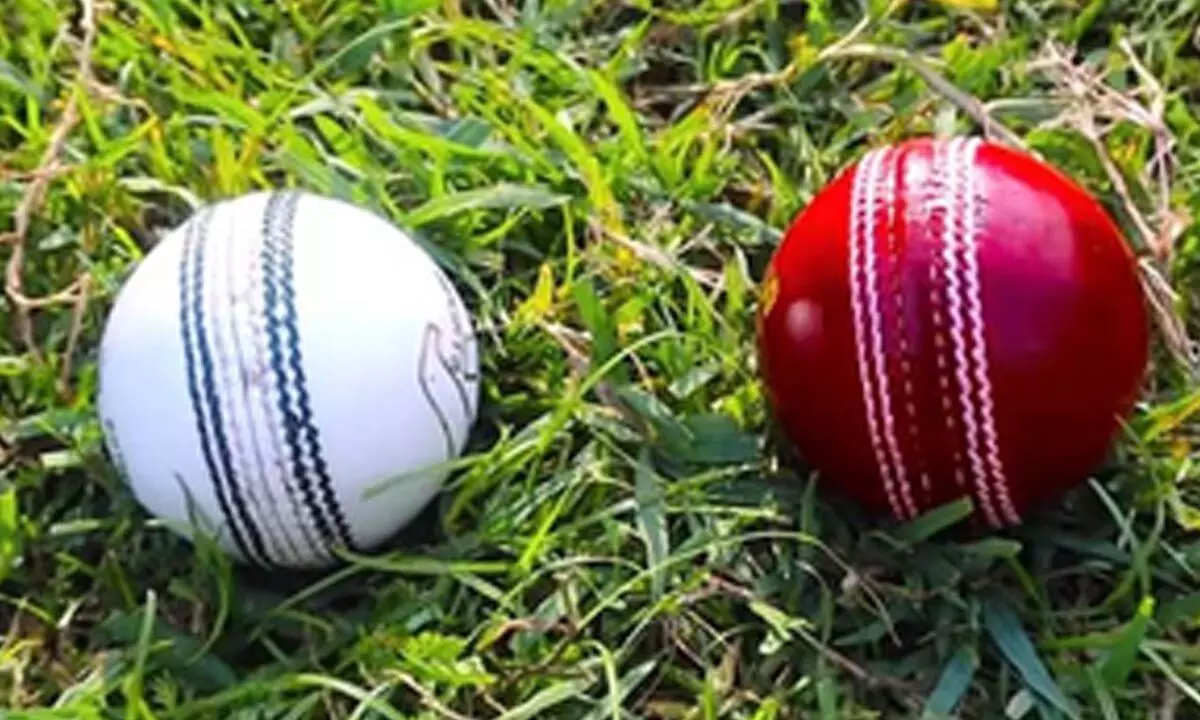Live
- Nagarkurnool: Free cataract screening camp held
- Officials told to ensure adequate availability of sand at stock points
- Revenue officials must have complete understanding of Bhu Bharati Act
- A girl child completes a family, says incharge Collector Sreeja
- Wanaparthy: Hospital seized, another issued warning
- Leading UK universities visit SRM-AP
- Bhatti launches Singareni’s Naini coal block in Odisha
- Coalition govt failed to uphold Hindu values: Vishnu
- Two get life sentence in murder case
- Employment declining despite higher registration in AP
White ball or Test team, both need killer punch for success in world cricket

As modern-day cricket becomes more technical, shorter and faster, horses for courses has emerged as a major fundamental doctrine.
Mumbai: As modern-day cricket becomes more technical, shorter and faster, horses for courses has emerged as a major fundamental doctrine.
Many countries have started following this principle and are nowadays picking different teams for different formats of the game -- the red-ball and white-ball cricket with a few players common in both squads.
For example, Ben Stokes is the England captain in red-ball or Test cricket while Jos Buttler leads the teams in Limited-overs formats. He led the England squad in the 50-overs World Cup in India in 2023 while Moin Ali was the captain of the England T20 squad from 2020 to 2023. Australia won the 50-overs World Cup with Pat Cummins leading the side, who incidentally also captained the side when it defeated India in the final of the World Test Championship in England.
India have in recent times started picking different teams for different formats, with some common players -- like Rohit Sharma, Virat Kohli, Ravindra Jadeja and Shreyas Iyer, Jasprit Bumrah being part of both the red-ball and white-ball teams. While Rohit Sharma led the squad in the WTC final and the 50-over World Cup, Hardik Pandya has been leading while K.L Rahul and Jasprit Bumrah have also discharged the captain's duties in recent times. Though Rahul and Bumrah are part of the Test team for the home series against England, Hardik Pandya has not played the longest format for India since 2018.
Both the Indian red-ball and white-ball teams have had some success in recent times -- especially in Tests and 50-overs cricket as the teams finished runners-up in both the World Test Championships cycles and the 50-overs World Cup in 2023. However, the country has not won an ICC event in any format since the Champions Trophy in 2013.
In the 2021-2023 WTC cycle, India played out a 2-2 draw away to England, clinched a 1-0 home win against New Zealand, lost the three-match series 2-1 in South Africa, whitewashed Sri Lanka 2-0 in early 2022 under Rohit Sharma, beat Bangladesh 2-0 under KL Rahul and reached the final with a 2-1 victory against Australia.
However, in the calendar year 2023, India played eight Tests and had a mixed result, winning three, and losing three while two matches ended in no result or draws.
The ODI team stormed into the final of the 50-over World Cup with an unbeaten record, annihilating opponents with ease including brilliant wins against Australia, Pakistan and Sri Lanka. Mohammed Shami topped the bowling charts despite missing a couple of matches with a 7/57 against New Zealand.
Virat Kohli mesmerised everyone with his batting in 2023, blasting 765 runs in 11 innings -- the most runs scored by any batter in the 2023 World Cup in India with Rohit Sharma's second at 597 runs. Shreyas Iyer (530 runs) and K.L Rahul (452 runs) also made it to the top-10 list. In all, Kohli struck eight hundreds in the year, six in ODIs and two in Tests.
At least in the year 2023, India did well in white-ball cricket as compared to red-ball one, winning 27 matches and losing seven in 35 outings -- one no result, while in T10Is, India won 15 matches and lost seven with one no result.
In the last T20 World Cup in Australia in 2022, India had advanced to the semifinal before suffering a humiliating 10-wicket defeat to England at the Adelaide Oval.
Though India have had different sides for each format, they are not truly separate sides because many players are common to both the red-ball and white-ball squads
The T20 sides, obviously enhanced by the talents gained from the Indian Premier League (IPL) that has produced for the white-ball teams players like Suryakumar Yadav, Rinku Singh, Jitesh Sharma, Yashasvi Jaiswal, Tilak Varma, Arshdeep Singh, Mukesh Kumar and Deepak Chahar, who were all part of the Indian T20 squad for the recent three-match T20I series against South Africa.
With players like Ruturaj Gaikwad, Shreyas Iyer, Ishan Kishan, and Ravindra Jadeja playing all three formats while K.L Rahul, Shubman Gill, Yashasvi Jaiswal, Rinku Singh besides Rohit Sharma and Virat Kohli playing more than one form, there is not a lot to differentiate between the white-ball and red-ball squads.
The skills required for white-ball and red-ball cricket are quite different. While white-ball games require strength, speed, strong hand-eye coordination, supreme fitness and a strong foundation in basic cricketing skills, to excel in red-ball cricket, one also needs lots of patience, concentration and the ability to spend a long time at the pitch.
Still, considering the strength of the individual players on paper, India's white-ball squads look stronger. However, it is also the fact that somehow both the red-ball and white-ball squads lack the final punch that has seen them stumble on the final step in ICC competitions.
Now, the BCCI needs to separate these squads into truly white-ball and red-ball squads and strengthen them further to win ICC events and dominate world cricket for a long duration.

© 2025 Hyderabad Media House Limited/The Hans India. All rights reserved. Powered by hocalwire.com






